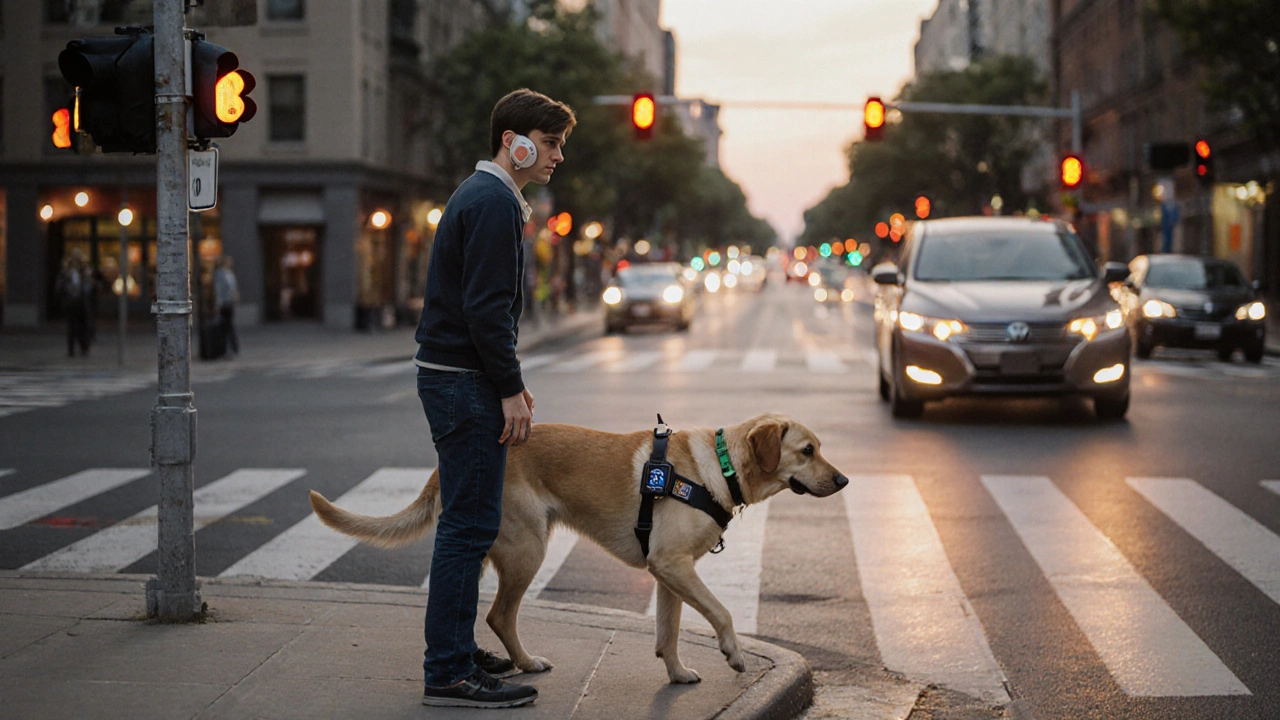Discover how hearing assistance dogs boost safety, independence, and mental health for people with hearing loss, plus training, costs, and legal rights.
Canine Assistance: Everything You Need to Know
When working with canine assistance, the practice of pairing specially trained dogs with people who need physical, sensory, or emotional support. Also known as service dog programs, it bridges the gap between disability and independence. Service dogs, dogs trained to perform tasks like retrieving items, opening doors, or alerting to medical events are the backbone of this field, while therapy dogs, friendly canines that provide comfort in hospitals, schools, and nursing homes add emotional relief in public settings. Successful assistance dog training, structured programs that teach obedience, task performance, and public etiquette relies on consistency, positive reinforcement, and a clear understanding of the handler’s needs. Finally, the Americans with Disabilities Act (ADA), the federal law that protects the rights of people using service animals in public spaces gives legal weight to the partnership.
One key attribute of canine assistance is its versatility. A single dog can be trained to manage multiple tasks, such as guiding a visually‑impaired person, alerting a diabetic to low blood sugar, or providing stability for someone with balance issues. This adaptability stems from the dog’s natural abilities—sharp scent detection, strong bond with humans, and willingness to work. Training programs break down tasks into bite‑size steps, letting the dog master one skill before moving to the next. For example, a “medication reminder” task starts with teaching the dog to recognize a specific bottle, then to fetch it, and finally to place it on the handler’s lap at the right time. Each step links back to the central goal of increasing independence.
Legal protections matter just as much as training techniques. Under the ADA, service dogs are allowed in restaurants, airlines, and other public venues, provided they are well‑behaved and under control. Handlers should carry a brief identification card and be ready to answer two simple questions: “Is the dog a service animal?” and “What work does the dog do?” This limited inquiry respects privacy while ensuring compliance. If a business refuses entry, the handler can cite the ADA and request a resolution. Knowing these rights prevents awkward confrontations and helps keep the partnership smooth.
Health and wellness of the canine partner are also crucial. Regular veterinary check‑ups, balanced nutrition, and proper exercise keep the dog fit for demanding tasks. Many owners use joint supplements, like glucosamine, to protect against wear and tear, especially for larger breeds that pull sleds or carts. Likewise, mental enrichment—puzzle toys, scent games, and varied training—prevents burnout and keeps the dog motivated. A healthy, happy dog translates to reliable assistance for the handler.
Now that you’ve got the basics of canine assistance, you’ll see why the topics below matter. From detailed training guides to legal FAQs and health tips for working dogs, the articles ahead cover the full spectrum of what it takes to make a partnership work. Dive in to find actionable advice, real‑world examples, and the latest updates that can help you or someone you know benefit from a well‑trained service or therapy dog.

